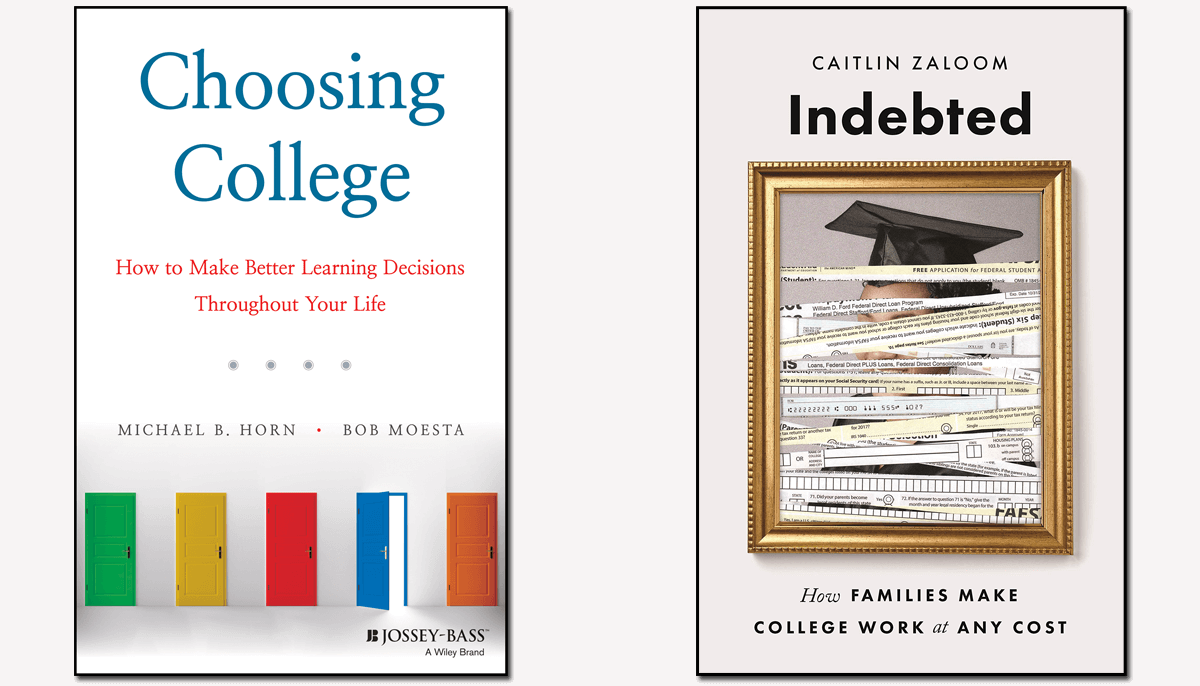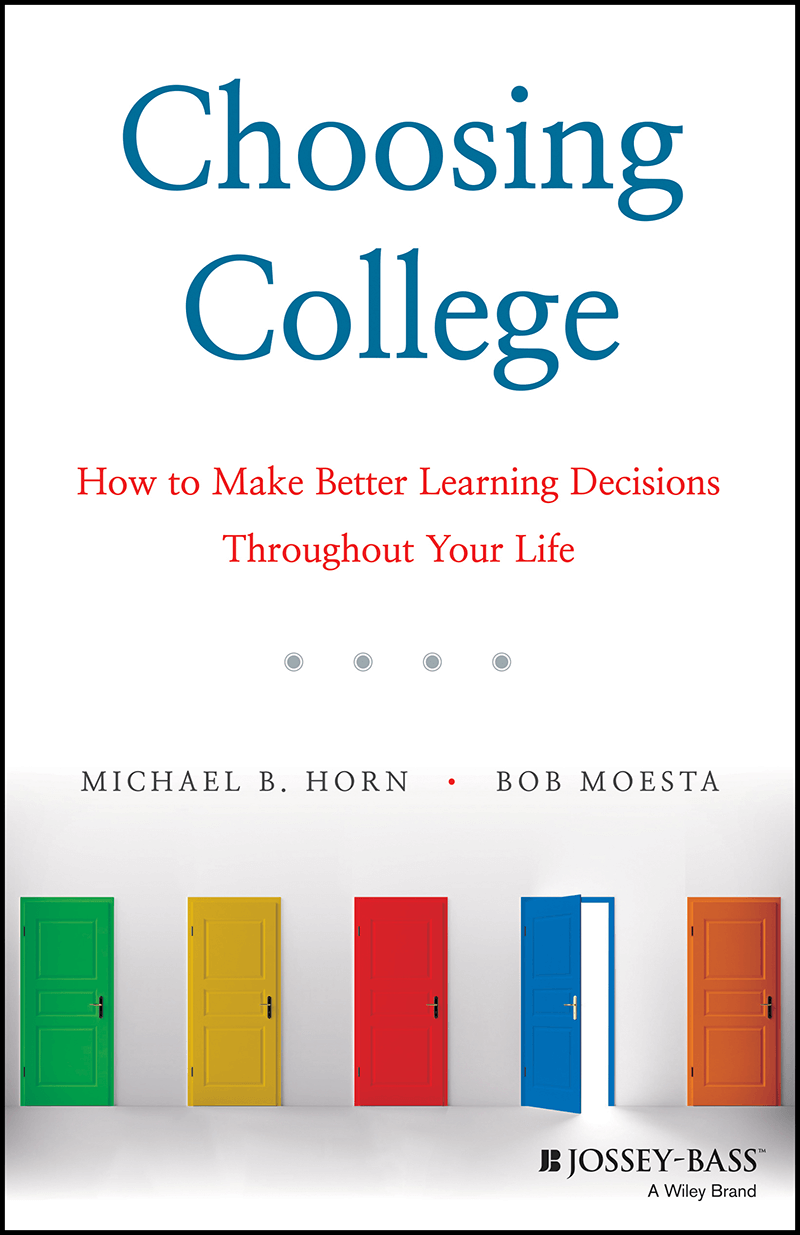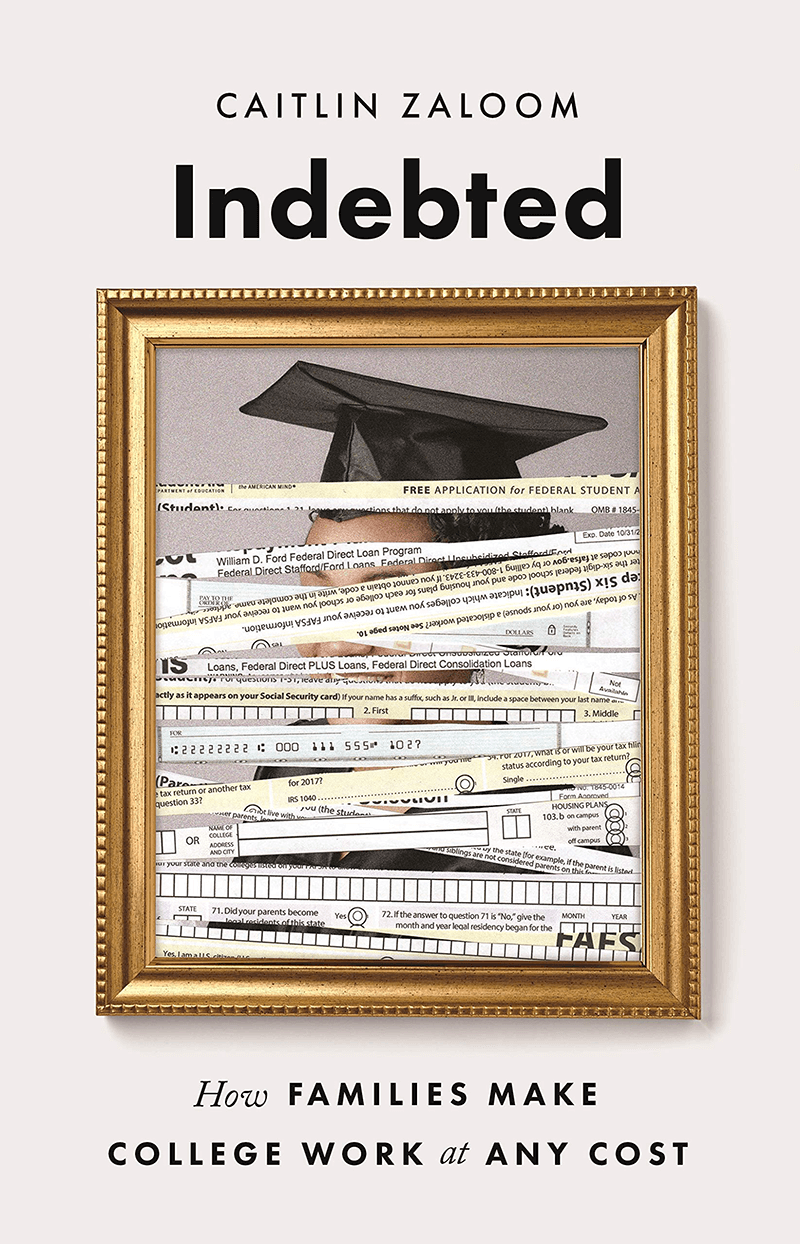
Choosing College: How to Make Better Learning Decisions Throughout Your Life
by Michael B. Horn and Bob Moesta
Jossey-Bass, 2019, $25; 304 pages.
Indebted: How Families Make College Work at Any Cost
by Caitlin Zaloom
Princeton University Press, 2019, $29.95; 280 pages.
As reviewed by Jason Delisle
American families face a daunting array of choices when pursuing and paying for a college education. That is partly why the “typical” undergraduate is nearly impossible to define: young adults attending a university full time and living on campus make up just a small share of today’s college-going population. What’s more, some students have begun to doubt that a college degree will pay off, given the high cost of tuition and the prospect of massive college debt. This hesitation is hardly irrational, since some colleges excel at promoting economic mobility while others leave many students with debt and no degree. Making the right choices about higher education—when to go, where to go, how to pay—feels more complicated than ever.
Two new books, Choosing College by Education Next executive editor Michael B. Horn and Bob Moesta and Indebted by Caitlin Zaloom, promise to help us understand the challenges families face in navigating this system—and ultimately improve consumer choice and perhaps the system itself. Only one of them, however, lives up to that promise.
Despite broad similarities in the books’ research focus and methodology (each is based on in-depth interviews with approximately 200 students and families) Choosing College stands out for how the authors present their findings. In large part, Choosing College reads like a self-help book for prospective students and their parents, a guide to exploring one’s authentic goals and reasons for attending college.
 The authors examine students’ college-going decisions in a consumer context, using what Moesta calls his “Jobs to Be Done Theory.” Instead of simply asking students why they made the college choices they did, he asks them to consider the job they “hired” a college to do. Many people, and policymakers in particular, tend to think students hire colleges for one reason: to get preparation leading to a job. But Choosing College shows the reader how that motivation is often secondary for students. Horn and Moesta reveal, for example, that many students hire a college to help them get away from their home, family, or some limiting set of opportunities. Other students go to college because that is what’s expected of them, or because they are looking to move up in their current careers. In each case, Horn and Moesta suggest ways that students (and parents) who hire colleges for each of the different jobs can improve their choices, better set expectations, and manage risks.
The authors examine students’ college-going decisions in a consumer context, using what Moesta calls his “Jobs to Be Done Theory.” Instead of simply asking students why they made the college choices they did, he asks them to consider the job they “hired” a college to do. Many people, and policymakers in particular, tend to think students hire colleges for one reason: to get preparation leading to a job. But Choosing College shows the reader how that motivation is often secondary for students. Horn and Moesta reveal, for example, that many students hire a college to help them get away from their home, family, or some limiting set of opportunities. Other students go to college because that is what’s expected of them, or because they are looking to move up in their current careers. In each case, Horn and Moesta suggest ways that students (and parents) who hire colleges for each of the different jobs can improve their choices, better set expectations, and manage risks.
Sometimes, however, their solutions target the symptoms of students’ problems rather than the underlying issues. Students who are considering college because it is expected of them are advised on how to follow through on attending college, but with adjusted expectations and strategies. To be fair, the authors also suggest alternatives to traditional credentials and pathways. Even so, readers are left wondering what might happen to students who follow these alternatives. Are students who postpone college when they realize they were only going to meet a parent’s expectations better off than students who have the same realization but enroll right away? Horn and Moesta never really say.
Choosing College also makes recommendations for higher education providers on how they might respond to the many different reasons students hire a college. Some of this advice is insightful: for instance, they point to the innovative online-learning approach used by Southern New Hampshire University in serving working adults who want to step up their skills. Other programs they profile seem underdeveloped and untested (which they acknowledge), such as Wayfinding Academy in Oregon, which helps students engage in two years of self discovery before making further college choices. Evidence that such innovations work would help convince readers that they present viable alternatives to the traditional college track. The authors also offer minimal discussion of the forces that might actively work against their recommended reforms, like faculty members who are attached to the status quo, or the built-in incentive structures in student-aid programs.
 In contrast to the fresh perspectives Horn and Moesta provide about college choices, Indebted largely rehashes popular narratives about college affordability. Even though the book draws on nearly 200 interviews with middle-class families, it offers little that one could not learn from reading a dozen or so newspaper articles on the challenges of paying for college today. Zaloom misses a golden opportunity to help us better understand why some families take on so much debt to pay for college.
In contrast to the fresh perspectives Horn and Moesta provide about college choices, Indebted largely rehashes popular narratives about college affordability. Even though the book draws on nearly 200 interviews with middle-class families, it offers little that one could not learn from reading a dozen or so newspaper articles on the challenges of paying for college today. Zaloom misses a golden opportunity to help us better understand why some families take on so much debt to pay for college.
Her interviews with families are often revealing, though, and occasionally Zaloom uncovers important explanations for a family’s decisions. As in Choosing College, the students and families portrayed in Zaloom’s book often see higher education as more than a utilitarian exercise in helping their children secure jobs. For them, college is about exploration, developing one’s full potential, and fulfilling dreams. It is easy to see how such views could lead families to pursue more expensive college options and the debt that goes with them. To that point, many of the students Zaloom profiles opt not to attend a public in-state university or live at home to reduce costs. Instead, they have their hearts set on expensive private colleges and the residential, social, and cultural experiences that go with them. That can be a worthwhile approach to pursuing a college education, but could this entrenched preference also be the culprit behind large debt balances? Zaloom never connects those dots.
Despite profiling so many students who opt for expensive private colleges, Zaloom largely faults inadequate state funding at public universities for causing families to rack up mountains of student debt. More funding, she argues, could have kept tuition in check. It’s hardly logical, though, to portray families struggling to pay private-college tuition, and then blame a lack of state funding for the problem. As for the universities’ role in the price increases, Zaloom lets them off the hook.
More contradictions arise when Zaloom extols the German higher education system for its free tuition. She fails to mention that Germany is notorious for restricting access to its universities, or that it ranks as one of the lowest among developed countries for degree attainment (which is partly how Germany affords free tuition). And Zaloom is no fan of vocational and technical education, which Germany stresses, because it “denies students the benefits of a broad education” that a four-year degree provides. So much for the German model then.
Zaloom gets into more trouble as she expands her edutourism. She cites Australia as another country to emulate, recommending that the United States adopt that country’s income-contingent loan repayment plan to solve our student debt problems. She closes with this idea, thus positioning it as her big solution to crushing student debt. Zaloom implies that Australia offers such generous repayment options because the country is more politically progressive than ours, but in fact this largess is made possible by the ways in which the Australian government restricts students and universities. For example, Australia issues loans only for tuition expenses, not living costs, and the loans are available mainly at public universities. The government also caps tuition and historically has controlled the number of students who can pursue bachelor’s degrees in various majors. Zaloom surely is not advocating for these policies.
Zaloom’s foray into Australia lays bare perhaps the biggest flaw in Indebted. She’s right that the Australian loan system serves to stave off unaffordable debt. It’s just that the United States already has this policy (one in four borrowers uses it). Yet Zaloom repeatedly argues that the major shortcoming of U.S. government loans is that “they must be paid off in the first, most vulnerable decade of graduates’ lives,” pushing students “to pursue lucrative work even if it doesn’t fulfill their true ambitions.” This is not true.
Surprisingly, in the final pages of her book Zaloom acknowledges that the United States has an income-based repayment option, but then she quickly downplays this fact, claiming that students’ payments are still “punishingly high” here and lower in Australia. That’s hardly fair or accurate. Some U.S. borrowers make slightly higher monthly payments (about $50 more) than their Australian counterparts, but many other Americans make lower payments. For example, a U.S. borrower earning $55,000 with one dependent would pay $205 monthly, regardless of the amount borrowed, and the government would forgive any debt remaining after 20 years. In Australia, this borrower pays $252 monthly (U.S. equivalent) and there is no loan forgiveness benefit. Readers should probably just ignore the many international comparisons in Indebted.
Choosing College and Indebted are both timely because they aim to better understand the increasingly common anxieties that surround decisions about higher education. And while these books are ultimately about fixing shortcomings in consumer decisions and college affordability, they both unintentionally highlight a virtue of our higher education system: students often have many options and choices available to them. Certainly, choice poses trade-offs and risks, but it can also be a nice problem to have.
Jason Delisle is a resident fellow at the American Enterprise Institute.
More from Education Next on “Choosing College” by Michael B. Horn and Bob Moesta :
• “What Colleges Can Learn From Toyota,” an excerpt from the book “Choosing College”
• “What Jobs Do Learners Hire Education To Do After High School?,” by Bruno V. Manno
• Horn appeared on the EdNext Podcast to discuss the “Choosing College,” and how to make the right choices in higher education.


